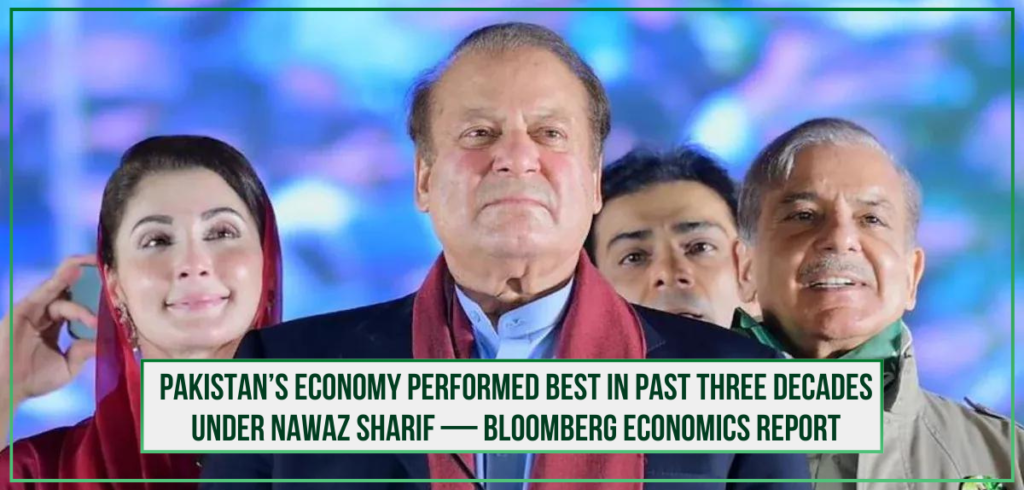Introduction:
In a recent analysis conducted by Bloomberg Economics, the economic performance of Pakistan over the past three decades was scrutinized, focusing on the tenures of the major political parties – Pakistan Muslim League (PML-N), Pakistan Tehreek-e-Insaf (PTI), and Pakistan Peoples Party (PPP). The findings shed light on the country’s economic health, using a misery index that combines inflation and unemployment rates. Surprisingly, the study revealed that the PML-N, led by three-time former Prime Minister Nawaz Sharif, outperformed its rivals during its rule. In this blog post, we will delve into the key takeaways from the analysis and explore the implications for Pakistan’s economic future.
Economic Performance Analysis:
The Bloomberg Economics Misery Index Results showcased PML-N scoring the lowest at 14.5 percent, followed by PTI at 16.1 percent and PPP at 17.2 percent. The methodology employed averaged the index values over the years each party held power since 1990. A lower value in the misery index indicates relatively better economic conditions. This challenges common perceptions, as the popular Pakistan Tehreek-e-Insaf (PTI) led by Imran Khan, despite its higher misery index, has maintained a significant lead in public approval, with a 57 percent rating.
The Popularity Factor:
Imran Khan’s enduring popularity, despite the economic challenges during his tenure, raises questions about the complex interplay between economic performance and public perception. The Gallup opinion poll revealing Khan’s 57 percent approval rating contrasts with Nawaz Sharif’s rising approval from 36 percent to 52 percent in the past six months. Analysts suggest that the public might be giving Sharif the benefit of the doubt, recognizing the challenges faced by any government amid soaring inflation and elevated unemployment.
Current Economic Challenges:
The economic landscape of Pakistan presents significant challenges, with inflation hovering around 30 percent, the national currency being Asia’s worst performer, and foreign exchange reserves plummeting. The country relies on a financial bailout from the International Monetary Fund (IMF), subject to conditions that may require unpopular measures, including subsidy withdrawals and tax hikes. This presents a tough road ahead for any political party that secures victory in the upcoming elections.
IMF Bailout and Economic Outlook:
Under the IMF’s conditions, the new government is expected to implement policies aimed at stabilizing the economy, despite potential backlash from the public. With the IMF projecting a modest 2 percent growth in the current fiscal year after a contraction in the previous year, the economic recovery path appears challenging. The road to recovery will necessitate bold decisions and strategic planning to address the existing economic hardships.
Conclusion:
The Bloomberg Economics analysis provides a comprehensive perspective on the economic management of Pakistan over the past three decades, challenging conventional wisdom about political parties and economic performance. As the country heads towards crucial elections, the electorate faces a critical decision in choosing a leadership capable of navigating the challenging economic terrain. The blog post underscores the importance of understanding the nuances of economic management, public perception, and the impending policy decisions that will shape Pakistan’s economic future.

